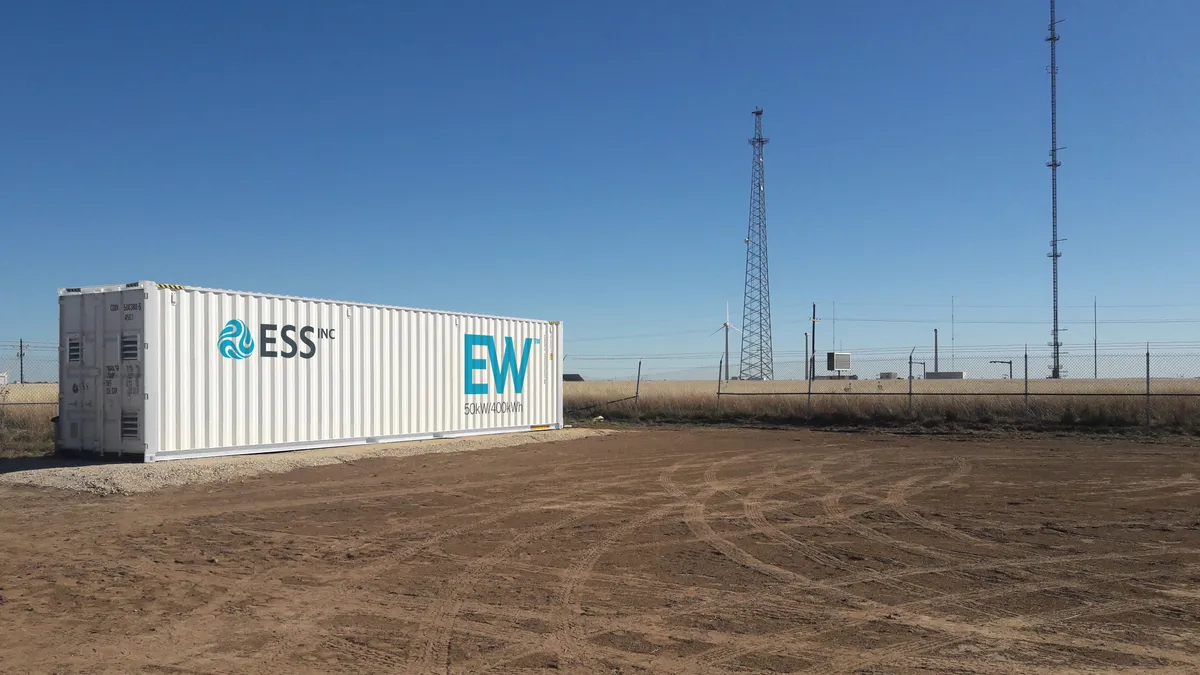Dive Brief:
- Global energy storage deployments, including customer-sited storage, will reach 358 GW/1,028 GWh by the end of the decade — a twentyfold increase over 2020 figures — according to an analysis released Monday by BloombergNEF.
- The U.S. and China together are expected to represent over half of that deployment by 2030, with India, Australia, Germany, the U.K. and Japan also becoming top markets. According to the analysis, supportive policies, aggressive climate goals and the need for flexible resources will drive growth in all those regions.
- The global energy storage market is growing at an unprecedented pace, Yiyi Zhou, report lead author and clean power specialist at BNEF, said in a statement, adding, "Falling battery costs and surging renewables penetration make energy storage a compelling flexible resource in many power systems. Energy storage projects are growing in scale, increasing in dispatch duration, and are increasingly paired with renewables."
Dive Insight:
According to BNEF, this growth in stationary energy storage will need investments of more than $262 billion.
In the U.S., the expected growth of the storage sector is based on the clean power goals of utilities and state governments. While the Asia-Pacific region is projected to lead in terms of megawatts of storage build-out by 2030, the Americas are likely to build more on a megawatt-hour basis, the report noted, in part because U.S. storage facilities tend to have a longer duration.
"This is the energy storage decade. We’ve been anticipating significant scale-up for many years and the industry is now more than ready to deliver," Yayoi Sekine, BNEF’s head of decentralized energy, said in a statement.
According to BNEF’s analysis, storage co-located with renewables — particularly solar — is becoming more common across the globe, and more than half of the storage build-out by the end of the decade will be used to provide energy shifting services.
Distributed batteries are also expected to grow, in part because of demand for back-up power, with Germany and Japan currently leading. By 2030, the analysis forecasts that a quarter of global storage deployments will be located at homes and businesses. On the other hand, energy storage used to defer grid investments could still remain marginal at the end of the decade, the analysis found, although that could change depending on regulatory actions and incentives.
In terms of types of storage, the analysis found that the industry is looking at different lithium-ion battery chemistries — lithium-iron phosphate stationary storage is expected to surpass nickel-manganese-cobalt chemistries for the first time this year, and become the leading lithium-ion battery choice until at least the end of the decade.
Although non-battery storage under development — like compressed air and thermal storage — can offer longer durations, "BNEF expects batteries to dominate the market at least until the 2030s, in large part due to their price competitiveness, established supply chain and significant track record."
Last month, a report from Wood Mackenzie also forecast that global energy storage deployments are set to nearly triple annually, reaching nearly 1 TWh by 2030. That analysis found that over the next half decade, markets like Texas, New York and the PJM Interconnection region will drive more storage deployments.
The BNEF report’s forecasts line up with what the Energy Storage Association (ESA) thinks is achievable, especially if policies that are currently pending in the U.S. and elsewhere come to fruition, said interim CEO Jason Burwen.
"I honestly wouldn’t be surprised if even now, what we’re seeing here is still a little modest [compared] to where we end up in 2030," he said.
When it comes to customer-sited storage, the U.S. is seeing policies that are trying to give end-users greater price signals or compensation for the services that distributed storage assets provide, Burwen said — for instance, California’s self-generation incentive program as well as "bring-your-own-device" style programs, such as in Massachusetts and Vermont, which allow someone with a storage asset to lend it out to the grid.
"Those kinds of ways of making use of those assets will help drive their deployment because it… improves project economics," Burwen said, adding that policies like these will be best complemented with reforms to interconnection processes.















